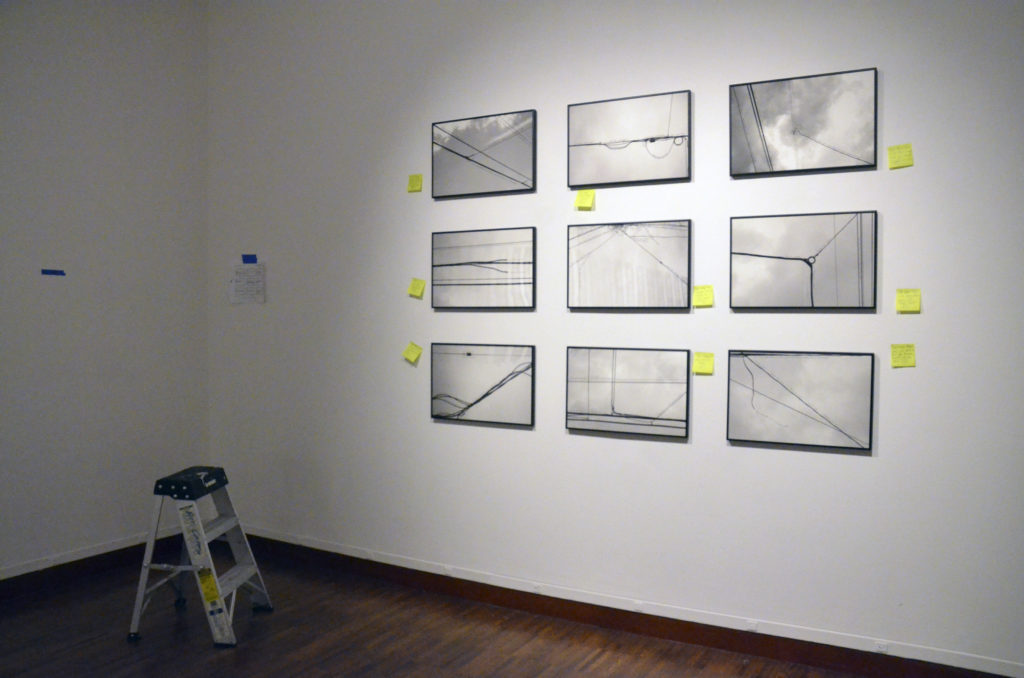Work-life-art balance - Is there such a thing?!
My answer to that is: There can be, but it is a constant struggle to maintain it, and there are plenty of times when it is impossible. At least, that is my experience.
There are so many factors that one has to deal with in life: Work demands, personal relationships with partners/kids/family/friends, physical and mental health issues, financial pressures... I could go on and on. These factors will vary for everyone and change over time. For example, for the first 14 years of my career as an artist-educator, children were not part of my life. I found the work-life-art balance challenging enough, but then I had twins and everything changed.
Back in 2004, an interviewer asked me to describe a typical day in my life and this is what I said:
5:30am- Wake up, answer e-mails for 30 minutes, exercise briefly, eat breakfast, shower, start a load of laundry.
7am- While my hands are engaged in making lunch for my kids, my mind is scanning the entire day to come so that I don't forget anything. Good luck with that! It's also my turn to take the kids to school.
8:30am-12:30pm- In my studio wrapping up the pre-production activities for a book of my photographs that is being published in a few months. I’m on the phone with the designer, the copy editor, and the translators setting up the final round of proofreading. I’m also getting together a copyright application and an exhibition application. This means preparing digital files of the photos, filling out paperwork, labeling, addressing….
12:30pm- Work-related meetings.
2-4:20pm- Teach a class of graduate and advanced photography students.
5:30pm- Family time with spouse and kids. Includes making, eating, and cleaning up after dinner, and getting the kids to bed.
8:20pm- Grade student projects, prepare for upcoming classes, answer e-mails, and do some committee work.
10:30pm- The siren song of sleep is calling my name.
As you can see, my days were jam-packed full, with hardly any down time. But the above example also illustrates my first piece of advice for artists who are struggling to find time to make art amid the chaos of life and the demands of your job: Schedule regular time for art-related activities and make that time inviolate. Whether you spend that time on making art or preparing grant applications, etc., doesn't matter. What does matter is that the only way that you will find time to have art in your life is to make it a priority.
For me, that meant scheduling it- just like a doctor's appointment. If I scheduled time for my creative life and treated it like I did an important doctor's appointment, then I wasn't going to end up giving that time away. I ended up carving out a grand total of 8 hours per week for my art. Twice a week, 4 hours each time. Which, as any artist knows, is grossly inadequate. But it was enough to keep me going, to keep my hand in it. And because my time dedicated to art was so limited, I rarely wasted it.
Clara Lieu, an art professor and artist, wrote a terrific blog post on this subject titled:
[embed]https://claralieu.wordpress.com/2013/10/03/ask-the-art-professor-how-do-you-balance-a-full-time-job-kids-and-your-own-art/[/embed]
In it, she states: "Successfully balancing a full-time job, kids and your art is all about various forms of sacrifice." Whether you have kids or not, that is totally true. And there are times when one or the other thing will have to be sacrificed. For example, for the first three years after my kids were born, I did nothing art-related at all. Nothing. Because I literally couldn't. I was so exhausted from raising the kids and trying to do my job that I couldn't even think about art. As obsessed as I am about art-making, I just realized that I couldn't make it a priority at that time. But the funny thing was, I didn't care. I knew that that state wouldn't last forever, and it didn't. Once the kids were older and less labor-intensive, I started scheduling time for creative work once again.
And that brings me to my second piece of advice, which is that learning to say "no" is an important part of making the sacrifices necessary for work-life-art balance, and the sooner you practice doing that, the better off you will be. As described above, sometimes I had to say "no" to my art. Sometimes I had to say "no" to how much time and energy I spent on my job. Sometimes I had to say "no" to a social or sports or family event. What you say "no" to will vary, according to what life throws at you at any given time.
No one can do it all or have it all, all the time. Saying "no" becomes an important coping mechanism for keeping your energy and time focused on what your priorities are/need to be. I know that that's easier said than done, but it really does help.
Everyone has to figure out their own answer to how to create work-life-art balance for themselves. Keep trying out different approaches until you find something that fits your own life and then keep at it, until you need to make a change again in order to regain your balance.



















